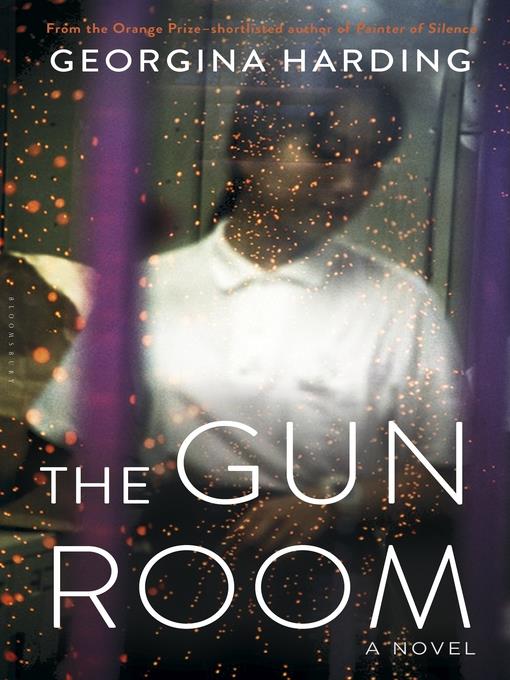
The Gun Room
کتاب های مرتبط
- اطلاعات
- نقد و بررسی
- دیدگاه کاربران
نقد و بررسی

February 1, 2017
Harding's fourth novel (following Painter of Silence) opens just after a devastating siege against a Vietnamese village witnessed by Jonathan, a young British war photographer. His image of a traumatized American soldier staring into space gains iconic status even as its creator seeks escape from the horrors he has viewed. In Tokyo, Jonathan finds some solace in taking pictures of Japanese urban life and gardens and with Kumiko, who becomes his lover. However, he cannot escape his history any more than can Kumiko's grandfather or Jonathan's own father, who fought on opposite sides in the jungles of Burma. The narrative builds slowly and subtly toward understanding and insight for Jonathan, with Harding demonstrating her prowess as a writer in fine descriptions of both the physical and the emotional worlds. VERDICT Not surprisingly, as Harding's novels have received acclaim--Painter of Silence was short-listed for the Orange Prize for Fiction in 2012--this new work is a powerful exposition about the struggle to bear witness to a spectrum of experiences, especially the experience of war.--Faye Chadwell, Oregon State Univ., Corvallis
Copyright 2017 Library Journal, LLC Used with permission.

September 15, 2016
A photographer questions his craft and himself.A shroud of war looms over Harding's (Painter of Silence, 2012, etc.) fourth novel like a impenetrable fog. More lengthy novella than novel, it's told in a gracefully quiet tone reminiscent of D.H. Lawrence--simple, descriptive, cool on the surface, churning with emotion below. Set in Vietnam and Japan and on a rural farm in England, it takes on big issues in a thoughtful, considered manner. Jonathan, a freelance photographer, arrives by chopper at a small Vietnamese jungle village where a fiery and bloody skirmish has just taken place. He sees a still, seated soldier leaning against a wall, his rifle held up straight in front of him, quickly snaps a picture, then moves on. After taking more photographs, he hurries back for his ride. Seeing the soldier again he walks right up to him: "This picture he knew he must have." The whole book radiates around this moment. Afterward, he sells this photo. Now iconic, it's on many magazine covers and newspapers. He travels to Japan to escape notoriety. Here "no one will know him." He finds a position teaching English and travels the area taking photographs. At the language school he meets the friendly and welcoming, "small and jaunty" Kumiko. They become friends, then lovers. She takes him to visit her grandparents. Her grandfather fought the British in Burma; Jonathan's father fought the Japanese in East Asia. Walking a Tokyo street one day Jonathan sees another gaijin or foreigner. He knows it's the soldier he photographed, a "man he didn't want ever to have met." Italicized passages commenting on Jonathan's activities and feelings, along with astute Susan Sontag-like ruminations on photography, viewer and subject, memory and responsibility, precede many chapters, in effect creating another story within the story. With a self-effacing tenderness, Harding brings her understated story to a powerful, emotional end. A haunting, subtle inquiry into complex and difficult matters.
COPYRIGHT(2016) Kirkus Reviews, ALL RIGHTS RESERVED.

October 15, 2016
A young English photographer's life is forever altered by bearing witness, particularly to the aftermath of a U.S. raid on a village during the Vietnam War. There, he captures an image of an American soldier that becomes a powerful war photograph, intentionally symbolizing the agony of war and unintentionally exposing how photojournalism is also wounding. Jonathan escapes his rural English upbringing and ends up in Tokyo, but he is still trapped in the past. Memories of his WWII veteran father as he observes that war's lasting effects on his Japanese girlfriend's grandfather provoke questions about truth, repercussions, and accountability. Harding's (Painter of Silence, 2012) direct but lyrical prose (think Hemingway meets Camus) draws readers into the photographer's mind and eyes, second by second, photograph after photograph, and vividly recreates the experience of seeing, everywhere, composition, frame, and subject. Harding is a compelling, precise, and concise writer, who knows how to deftly establish time and setting. Here she has structured a captivating story, in which history, memory, and normal lives poignantly intersect.(Reprinted with permission of Booklist, copyright 2016, American Library Association.)

























دیدگاه کاربران